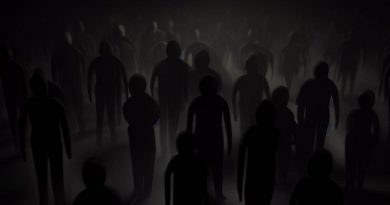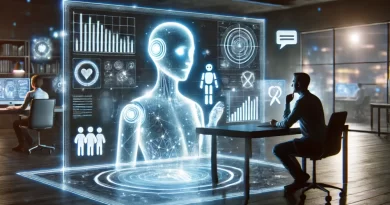Why do 9/11 conspiracy theories still persist after 23 years?
Twenty-three years after the terrorist attacks on September 11, 2001, conspiracy theories surrounding the events of that day continue to thrive. Despite the extensive investigations and reports that have debunked many claims, a significant portion of the public remains sceptical of the official accounts.
From allegations that the US government knew about the attacks in advance, to claims that explosives were planted inside the World Trade Center towers, the persistence of 9/11 conspiracy theories raises important questions about why these beliefs continue to endure.
How did 9/11 conspiracy theories begin?
The facts surrounding 9/11 are widely accepted: 19 terrorists hijacked four commercial airliners, crashing two into the World Trade Center towers in New York City, one into the Pentagon, and another into a field in Pennsylvania after passengers attempted to regain control of the aircraft.
However, just months after the attack, conspiracy theories began to surface.
By late 2001, protestors could be seen carrying signs reading “Bush Knew,” suggesting that the US government was either complicit in the attacks or failed to prevent them intentionally.
These beliefs formed the foundation of what would become known as “Trutherism.” The conspiracy theory gained traction quickly, driven by a combination of anti-Bush sentiment and deep distrust of government institutions.
By 2002, Democratic Representative Cynthia McKinney from Georgia famously asked, “What did this administration know, and when did they know it?” fuelling suspicions among a growing number of Americans.
In the years immediately following 9/11, polls revealed a surprising number of Americans subscribed to Trutherism. A 2006 survey conducted by Ohio University found that 36 per cent of Americans believed the government either helped orchestrate the attacks or knew about them but failed to act.
Among Democrats, 51 per cent expressed some belief in Trutherism, compared to 18 per cent of Republicans. This belief spanned political lines and persisted even after the bipartisan 9/11 Commission released a comprehensive 585-page report in 2004, detailing the intelligence failures that allowed the attacks to occur.
How the internet fuelled the 9/11 conspiracy theories
The internet played a significant role in the spread of 9/11 conspiracy theories. In the early 2000s, online forums and communities dedicated to Trutherism began to emerge, providing a space for believers to share ideas, organise events, and challenge the official narrative.
A new class of self-proclaimed “experts” also joined the conversation, lending a veneer of legitimacy to conspiracy theories. These figures included Steven Jones, a physicist who claimed that explosives were used to bring down the towers, and David Ray Griffin, a theologian who wrote extensively on the topic.
At the same time, mainstream media outlets like Popular Mechanics began to debunk many of these claims. In 2005, Popular Mechanics published a comprehensive report addressing several of the most persistent conspiracy theories, explaining how the planes’ impact and subsequent fires caused the towers to collapse. Despite this, Truthers dismissed the report, accusing the magazine of being a tool of the government.
One of the most persistent claims by Truthers revolves around the collapse of the World Trade Center towers. The official investigation by the National Institute of Standards and Technology (NIST), funded by the federal government, concluded that the collapse was caused by intense fires, not explosives.
The impact of the planes dislodged fireproofing materials on the towers’ steel columns, and as the fires burned at temperatures reaching over 1800 degrees Fahrenheit, the structural integrity of the buildings weakened.
According to experts, steel loses about 50 per cent of its strength at 1100 degrees Fahrenheit and more than 90 per cent at 1800 degrees Fahrenheit. This, combined with the dislodged fireproofing and the massive weight of the upper floors, caused the towers to collapse in a “pancake” effect, where one floor collapsed onto the one below in quick succession.
What are some other controversies doing the rounds?
Another focal point of 9/11 conspiracy theories is the collapse of World Trade Center Building 7, which was not hit by a plane but collapsed approximately seven hours after the North Tower. Conspiracy theorists point to video footage showing Building 7’s collapse as evidence of a controlled demolition.
However, investigators concluded that fires, ignited by debris from the collapse of the North Tower, were the primary cause of Building 7’s failure. The National Institute of Standards and Technology (NIST) report on Building 7 found that the collapse was initiated by the failure of a critical interior column, which led to a progressive collapse of the structure.
Despite these findings, conspiracy theorists continue to claim that explosives were used in the towers’ destruction.
As early as September 11, 2001, Van Romero, an explosives expert, was quoted by the Albuquerque Journal as saying, “There were some explosive devices inside the buildings that caused the towers to collapse.” Although he later retracted his statement, the damage was done, and his early comments are still cited by conspiracy theorists to this day.
Investigations into the collapse found that the intense fires, fuelled by the remaining jet fuel, ignited materials such as office furniture, carpets, and curtains. These fires burned at such high temperatures that they caused the steel columns to weaken, leading to the towers’ collapse.
While some conspiracy theorists claim the fire could not have burned hot enough to melt steel, experts argue that the steel only needed to lose its structural strength, not melt, to cause the collapse.
Fire safety remains a significant challenge, as seen in the 2017 Grenfell Tower fire in London, where flammable cladding contributed to the rapid spread of the blaze.
Why do 9/11 conspiracies still persist after 23 years?
Twenty-three years later, the resilience of 9/11 conspiracy theories remains puzzling. According to a poll conducted in recent years, one in six Americans still believes that some element of the US government was involved in the attacks.
Among Democrats, 19 per cent continue to express some belief in Trutherism, while 14 per cent of Republicans do the same. These figures are concerning, as they highlight a broader trend of scepticism and distrust in governmental institutions, a trend that has only been exacerbated in the wake of other conspiracy theories such as those surrounding the 2020 US election and the COVID-19 pandemic.
Experts suggest that Trutherism continues to thrive because it taps into a deep well of disillusionment and distrust in authority. Conspiracy theories, in general, offer simple explanations for complex events, providing a sense of order in a chaotic world.
What next?
As we reflect on the events of 9/11, it becomes clear that conspiracy theories are unlikely to disappear anytime soon. With the rise of social media and the increasing polarisation of political discourse, Trutherism and other conspiracy theories have found new platforms and audiences.
Former US President Donald Trump, while not a vocal proponent of 9/11 conspiracy theories, has helped normalise conspiratorial thinking by endorsing other baseless claims, such as those surrounding election fraud and Obama’s citizenship.
In this environment, it is critical to continue debunking false claims and promoting evidence-based explanations. As Popular Mechanics wrote in 2005, “The world is awash in false information, and sometimes the best defence is simply pointing to the facts.”
For now, it seems that Trutherism will remain a part of the broader landscape of American conspiracy culture.
With inputs from agencies

